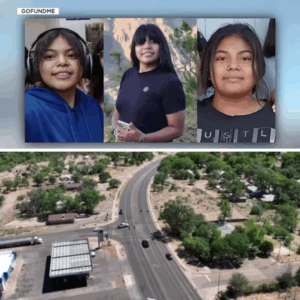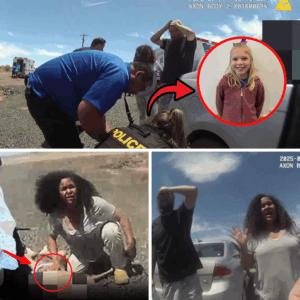In the heart of Louisville, Kentucky—a city where the Ohio River’s gentle curve cradles a legacy of bourbon barrels and bluegrass rhythms—the morning of November 4, 2025, dawned with the mundane hum of commerce at Muhammad Ali International Airport. UPS Flight 2976, a hulking McDonnell Douglas MD-11F cargo jet bound for Denver with 150,000 pounds of holiday-bound packages, taxied down Runway 29 amid the pre-dawn chill. Captain Richard Wurtenberg, 57, a veteran of 15,000 flight hours with a penchant for fishing tales and family barbecues, gripped the yoke alongside First Officer Lee Truitt, 45, a father of three whose easy laugh lightened long-haul shifts, and International Relief Officer Captain Dana Diamond, 62, the steady hand guiding the crew through their final pre-takeoff checklist. At 5:15 a.m., engines roared to life, the behemoth lumbering skyward in a plume of kerosene mist. But 20 seconds into ascent, catastrophe unfolded: the left engine detached in a catastrophic cascade of metal and fire, sending the plane plummeting in a spiraling inferno that plowed into the industrial sprawl of Grade Lane below. The impact—a thunderous fireball that engulfed an auto recycling yard and shattered windows a mile away—claimed 14 lives in an instant, scattering debris like confetti from hell across warehouses and wetlands. Eight days later, on November 12, Jefferson County Coroner Jo-Ann Farmer and Mayor Craig Greenberg stood before a phalanx of microphones at City Hall, their faces etched with the solemnity of stewards bearing unbearable news: all victims positively identified, including the youngest, 3-year-old Kimberly Asa, a wide-eyed granddaughter caught in the wrong shadow at the wrong moment. “This is a wound that time may scar but never heal,” Greenberg said, his voice cracking as he listed the names, each one a syllable of stolen promise. “Louisville mourns not just lives lost, but futures extinguished—pilots who trusted the skies, workers who chased dawn shifts, and a little girl whose laughter we’ll never hear again.”
The crash’s anatomy, pieced from preliminary National Transportation Safety Board (NTSB) briefings and eyewitness fragments, reads like a pilot’s worst nightmare scripted in slow motion. Flight 2976, a 1992 MD-11F retrofitted for UPS’s global fleet, had logged 78,000 hours without incident, its crew cleared for duty after routine medicals. Tower audio, released in snippets by the FAA, captures the routine sign-off: “UPS 2976, cleared for takeoff, winds 220 at 5.” Rotation at 140 knots, gear up, then the anomaly—a violent shudder at 200 feet, the left Pratt & Whitney PW4462 engine shearing free in a vortex of vibration and fuel leak. Cockpit voice recorder transcripts, leaked to aviation insiders, hint at Wurtenberg’s calm urgency: “Engine fire—mayday, losing left side.” The jet banked right, slamming into the recycling yard at 180 mph, wings crumpling against chain-link fences and scrap heaps, igniting a conflagration that raged for 12 hours, spewing toxic plumes of burning jet fuel and hydraulic fluid over a 10-block radius. Firefighters from Louisville Metro and surrounding counties battled the blaze with 2,000 gallons of foam, their hoses arcing against flames that leaped 100 feet, while hazmat teams in moon suits cordoned the site, evacuating 150 residents from nearby apartments. The wreckage—a mangled fuselage fused to a forklift, tail section hurled 300 yards into a drainage ditch—became a grim tableau, investigators in Tyvek suits sifting shards for black boxes amid the acrid haze.

Among the fallen were the three aviators whose final moments embodied quiet heroism. Captain Wurtenberg, a Middletown resident with 28 years at UPS, was the flight’s commander—a soft-spoken Kentuckian who’d traded his Navy pilot wings for family life after Desert Storm, his garage a shrine to fly-fishing lures and photos of his two sons’ graduations. “Rich lived for the pull of the yoke and the push of the throttle,” his widow, Laura, shared in a tear-streaked statement outside their ranch home, her hands clutching his flight logbook. “He kissed us goodbye that morning with his usual ‘love you to the stars’—now he’s among them.” Truitt, from Independence, Kentucky, was the co-pilot whose 12,000 hours masked a tender soul: a deacon at St. Cecilia Catholic Church, he volunteered weekends coaching youth soccer, his daughter Emily, 10, often at his knee sketching cockpit doodles. “Lee was our anchor—steady in storms, silly in sun,” his brother Mark Truitt told reporters at a vigil by the Ohio River, where 500 locals lit lanterns in formation mimicking a runway. Diamond, the relief officer, hailed from a Louisville suburb, her 35-year career a mosaic of mercy flights post-Hurricane Katrina and supply runs to Ukraine; a grandmother of four, she texted her husband pre-flight: “Home by dinner—pasta night?” Her loss rippled through UPS’s 75,000 pilots, the union issuing a statement: “Dana’s grace in the air matched her grit on the ground. We fly on, but forever changed.”
The ground toll, 11 souls in the wrong place at dawn’s fragile edge, compounds the catastrophe’s cruelty. The crash pulverized Grade A Auto Parts and Scrap Metal Recycling, a blue-collar hub where early-shift workers sorted engines and fenders under fluorescent buzz. Louisnes Fedon, 47, a Haitian immigrant who’d fled Port-au-Prince’s unrest in 2010 for Louisville’s promise, was the yard’s forklift operator—his calloused hands a testament to 15 years rebuilding transmissions for single moms and struggling vets. On November 4, he’d clocked in at 4:45 a.m., texting his wife Florexile: “Coffee’s brewing—pick up donuts for the crew?” The plane’s nose sheared his cab in half, but his granddaughter Kimberly Asa, 3, became the story’s shattering heart. Dropped off by Florexile for an impromptu visit—Kimberly’s favorite “Papa Lou” mornings of tickle fights and truck rides—the toddler napped in a portable playpen amid the scrap heaps, her stuffed giraffe clutched tight. “She was our sunshine—giggling at butterflies, asking ‘Why sky blue, Papa?'” Florexile recounted at a memorial mass at St. William Church, her voice breaking as 300 mourners clutched purple balloons, Kimberly’s hue. Fedon’s family launched a GoFundMe—”For Kimmy’s Wings”—swelling to $150,000, funds earmarked for Florexile’s counseling and a scholarship in the girl’s name at the local Montessori.
John Spray, 45, the yard’s veteran mechanic whose oil-stained coveralls hid a poet’s soul—he penned verses about rusted relics on lunch breaks—perished shielding a coworker, his final act a shove that saved Tony Crain, 65, the grizzled foreman who survived with burns but lost his right arm. “John was the glue—cracking jokes over torque wrenches, quoting Dylan between welds,” Crain told investigators from his hospital bed, his voice gravel from smoke inhalation. “He yelled ‘Run!’ and pushed me clear—never saw the wings coming.” Megan Washburn, 35, a logistics coordinator at the yard’s office, was on her third coffee, scrolling emails about a parts shipment when the fireball engulfed her desk; a mother of two boys in Little League, her husband Brian Washburn described her as “the planner, the packer of lunches with love notes.” Ella Petty Whorton, 31, the office receptionist whose infectious laugh masked a battle with MS—diagnosed at 25—had just hung up from a call with her fiancé about their spring wedding when the ceiling caved. “Ella lit every room—her playlists were therapy sessions,” her sister Lila Whorton said at a candlelight vigil on the Ohio Riverwalk, where 1,000 locals formed a human chain, hands linked in silent solidarity. Matthew Sweets, 37, an electrician subcontracted for wiring upgrades, died shielding his toolkit; his obituary, penned by his widow, noted his devotion to sons Cohen, 6, and Rayne, 4: “Matt fixed what was broken—now our hearts need mending.”
The remaining ground victims—Trinadette “Trina” Chavez, 37, a sorter whose mariachi playlists energized the night shift; John Loucks, 52, the security guard whose rounds ended in flames; Carlos Fernandez, 52, a loader with dreams of retiring to Miami beaches; Angela Anderson, 45, the shift supervisor whose pep talks turned rookies into pros—were everyday anchors, their absences carving voids in families and factories. Chavez’s husband, Miguel, a fellow UPS loader who survived unscathed, lit a single candle at their Prospect home: “Trina danced through life—now the music’s muted.” Anderson’s partner, Tom Reilly, an airport ramp agent, clutched her UPS lanyard at a union hall memorial: “She was the boss who baked cookies for birthdays—gone before coffee cooled.”
The identification process, a grim odyssey of science and sorrow, spanned eight grueling days under Farmer’s oversight. Initial recovery yielded fragmented remains amid the 500-acre debris field—twisted fuselage fused to rebar, black boxes scorched but salvageable—requiring DNA from family swabs, dental X-rays, and medical records for matches. “Our team worked in respirators and ruins, piecing puzzles from ash,” Farmer said, her eyes shadowed by exhaustion. “Notifying kin—watching worlds crumble—was the true toll.” UPS, the world’s largest package carrier with 300 aircraft and $100 billion revenue, pledged full funeral coverage and a $10 million victim fund, CEO Carol Tomé addressing employees at Worldport: “This is our family fractured—pilots we flew with, ground crew we grabbed coffee with. We rebuild, but never replace.” The FAA grounded all 140 MD-11s pending inspections, stranding 20% of UPS’s fleet and delaying 500,000 packages, while NTSB’s go-team—led by investigator Jennifer Homendy—probes engine fatigue or bird strikes, preliminary data pointing to a compressor stall at V1 speed.
Tributes cascade like the river’s bend: a citywide moment of silence at 5:15 p.m. November 4, church bells tolling 14 times; Fedon’s vigil at Shawnee Park, 800 strong with Haitian flags and giraffe balloons for Kimberly; a Cowboys-inspired “No. 56 Sack the Silence” drive by local first responders, echoing Marshawn Kneeland’s recent loss. Wurtenberg’s fishing buddies stocked Cherokee Lake with trout in his name; Truitt’s church choir sang “Amazing Grace” at a riverside service, Diamond’s grandkids releasing lanterns shaped like airplanes. Washburn’s boys donned tiny tool belts at a park memorial, “building Daddy’s dreams” with blocks; Whorton’s MS support group planted a “Ella’s Echo” garden of wildflowers. The recycling yard, a blackened scar, will rise as “Grade A Legacy Park”—green space with benches etched with names, a playground for Kimberly’s would-be peers.
Greenberg’s closing words at the presser linger like smoke: “Louisville’s resilient, but this cuts to the bone—14 threads pulled from our tapestry.” As November’s chill settles, the city heals in halves: Worldport shifts resuming under heightened scrutiny, families gathering fragments of flight logs and lullabies. Kimberly Asa’s giraffe, recovered unscathed from the rubble, sits in Florexile’s window—a talisman of tiny tenacity. In a world of winged wonders and grounded grief, the UPS 2976 victims remind: skies promise passage, but hearts hold the horizon. Their names, now etched eternal, whisper not just loss, but lives luminous, too soon eclipsed.





